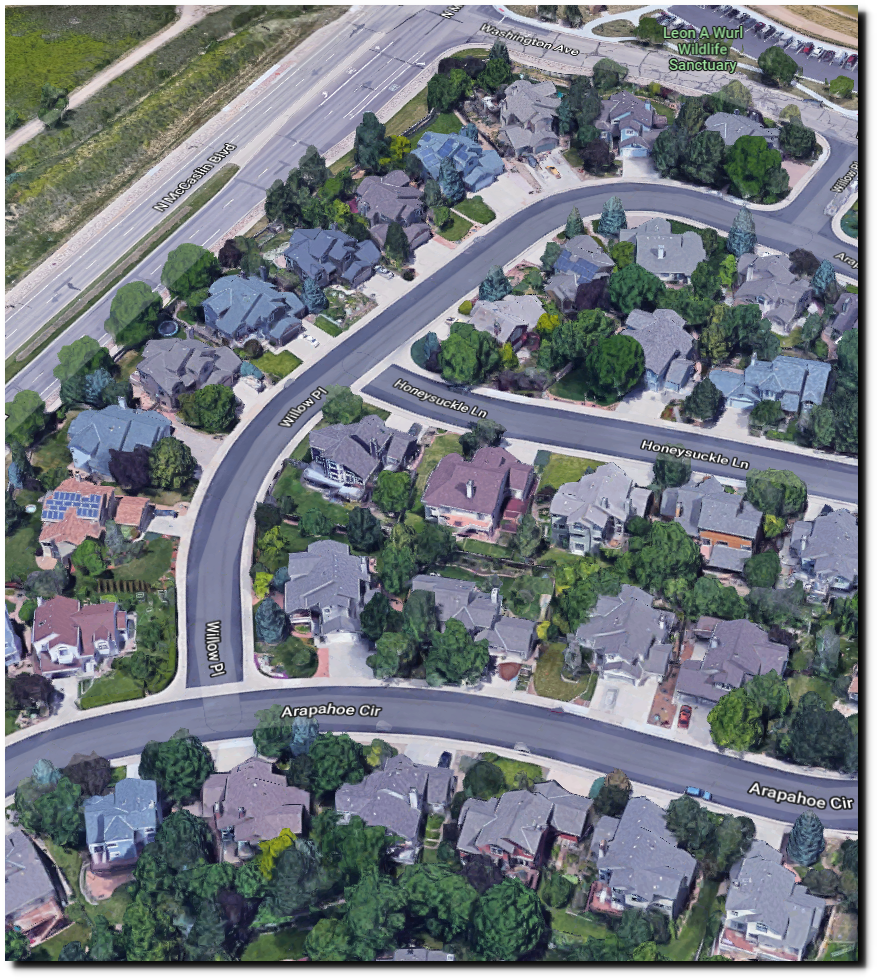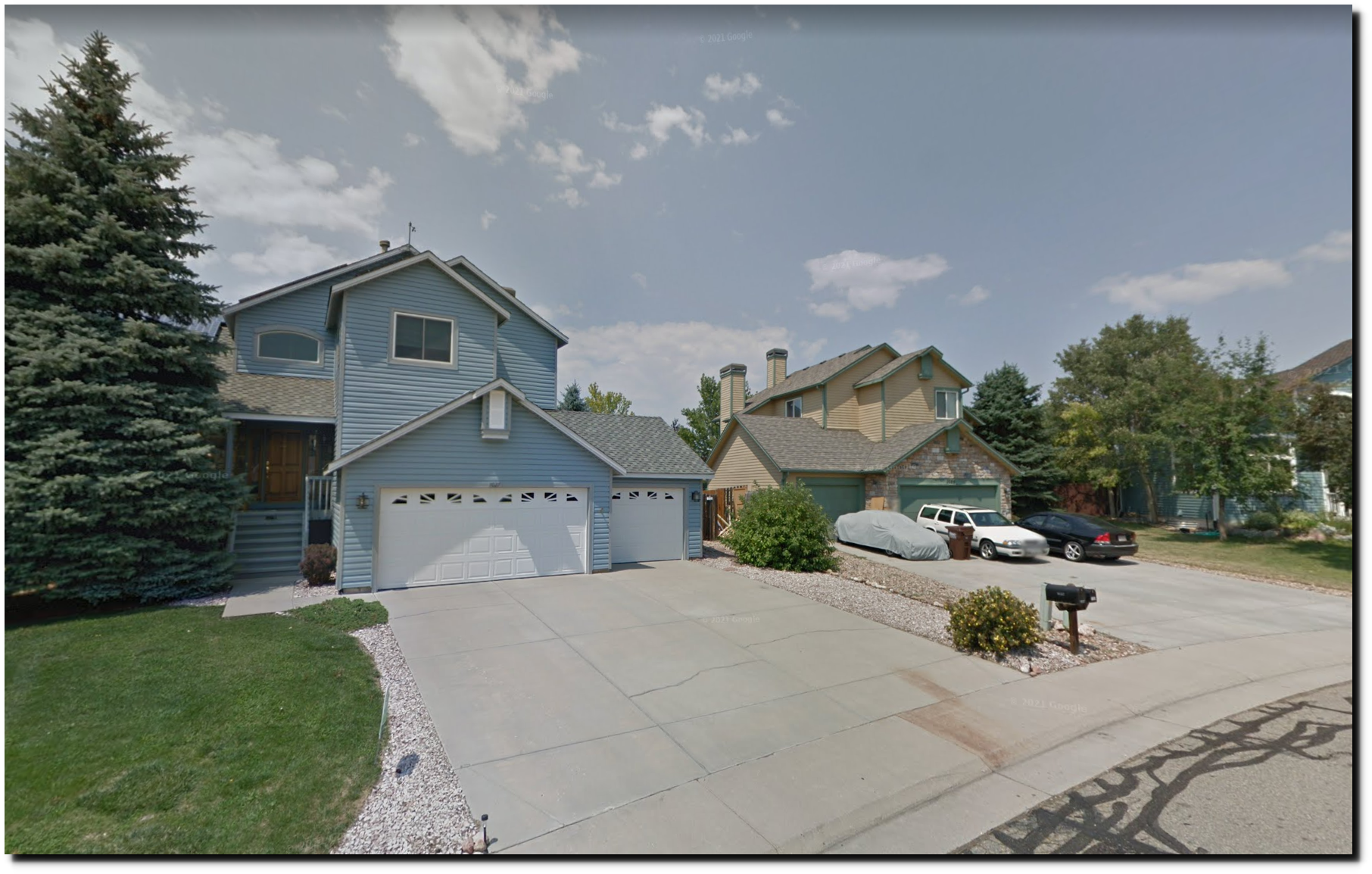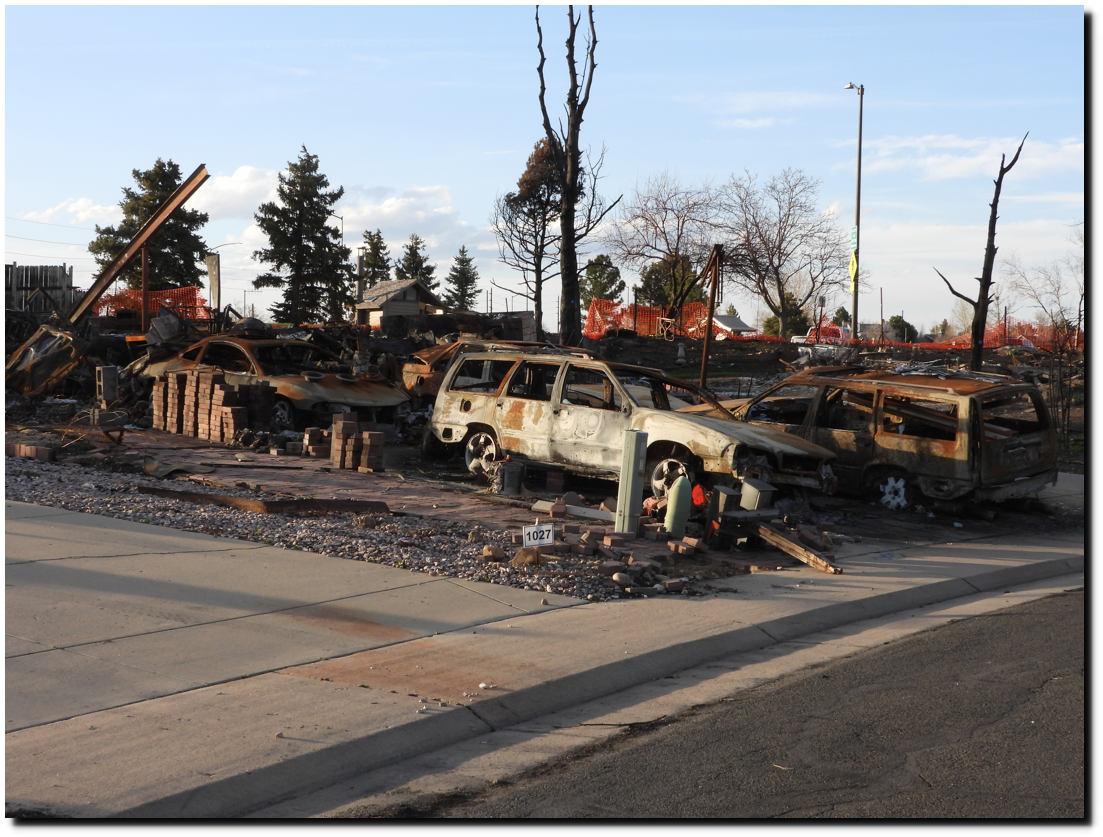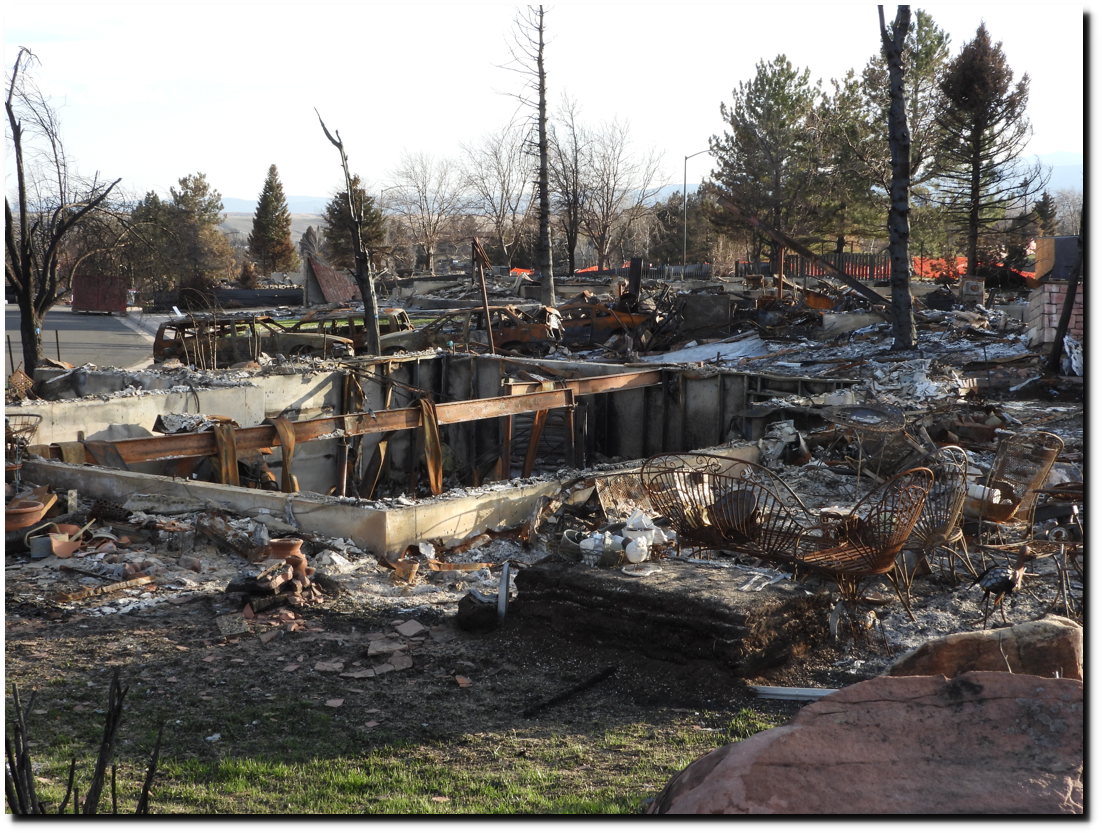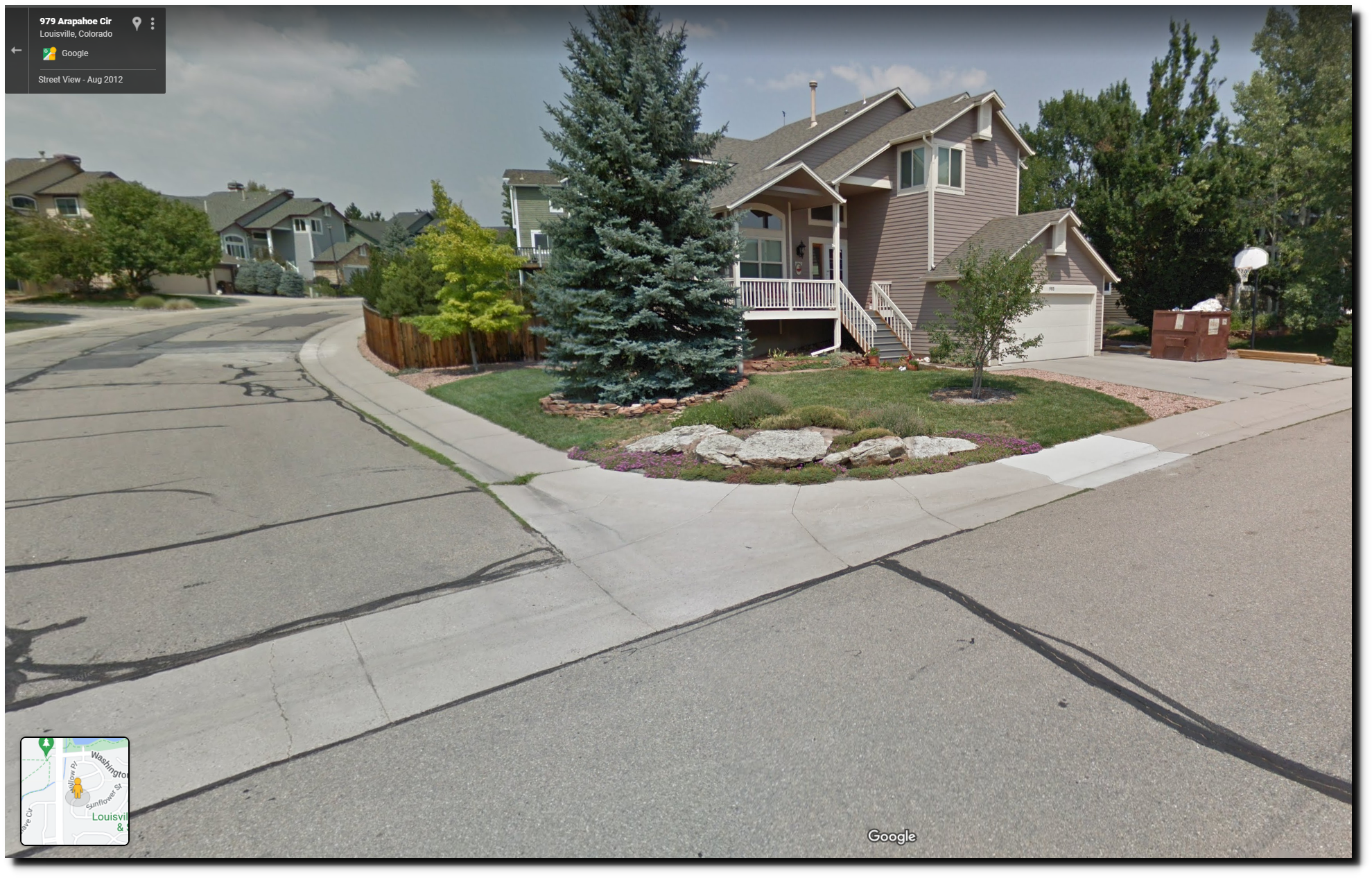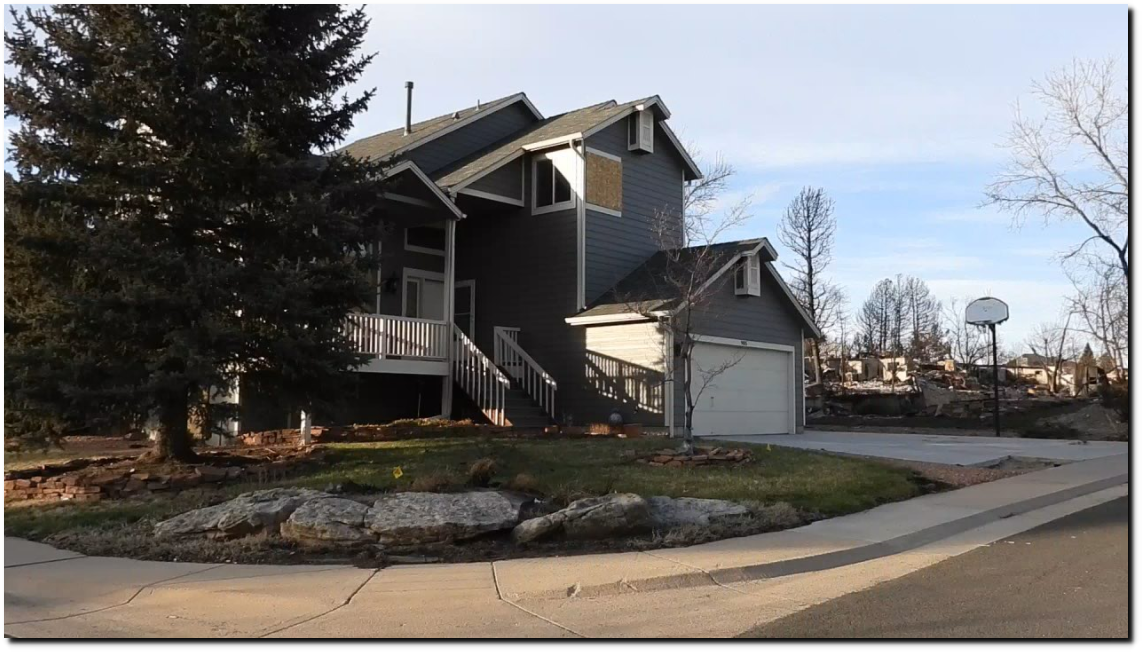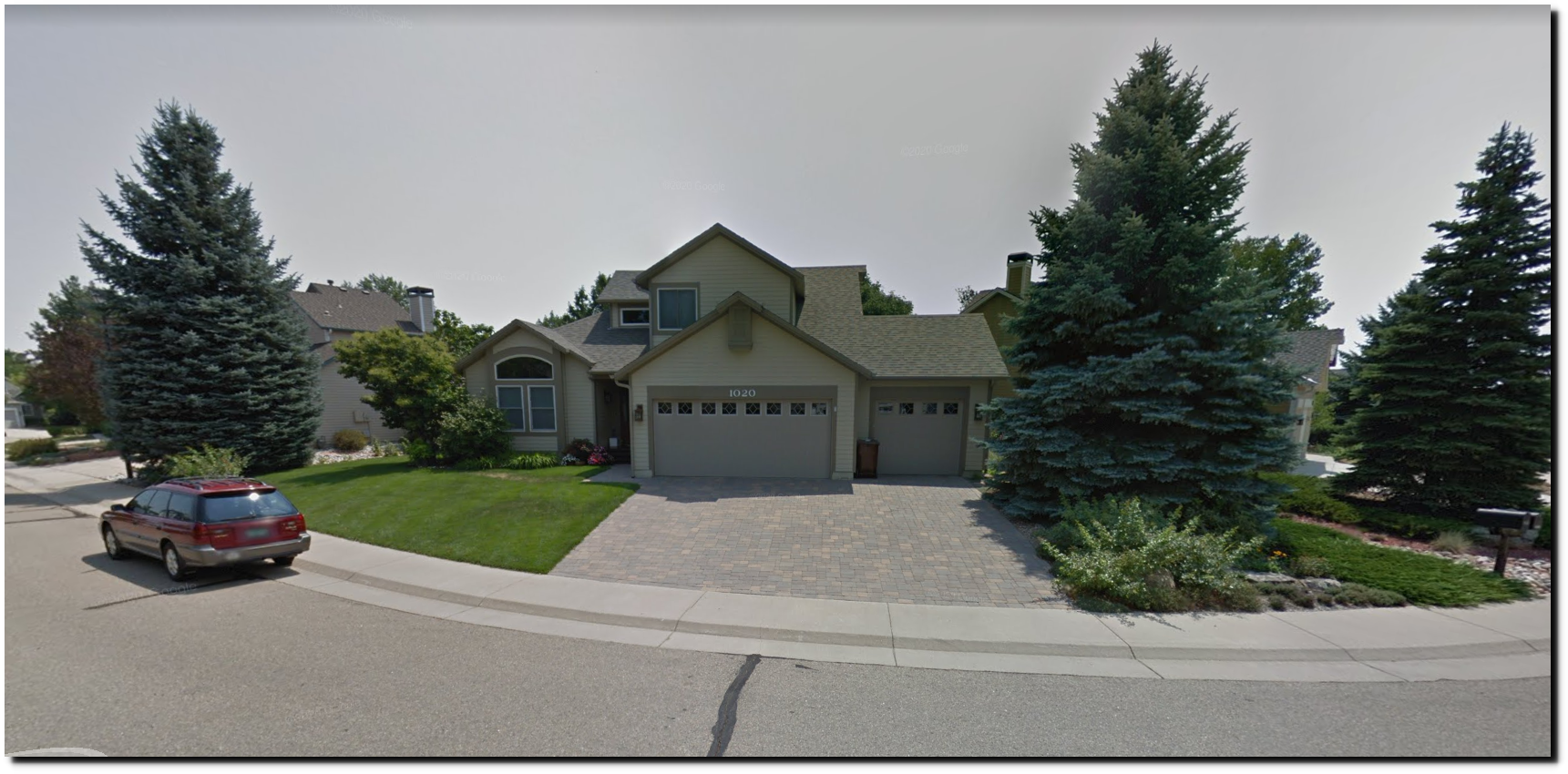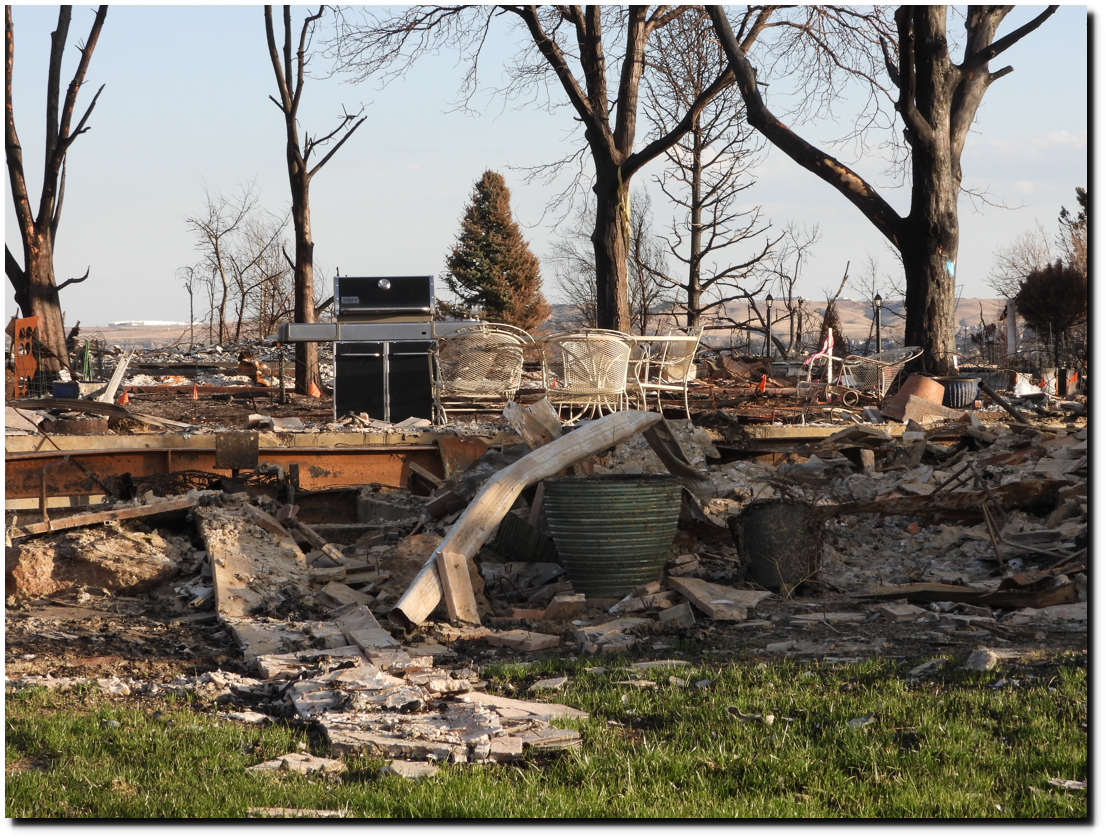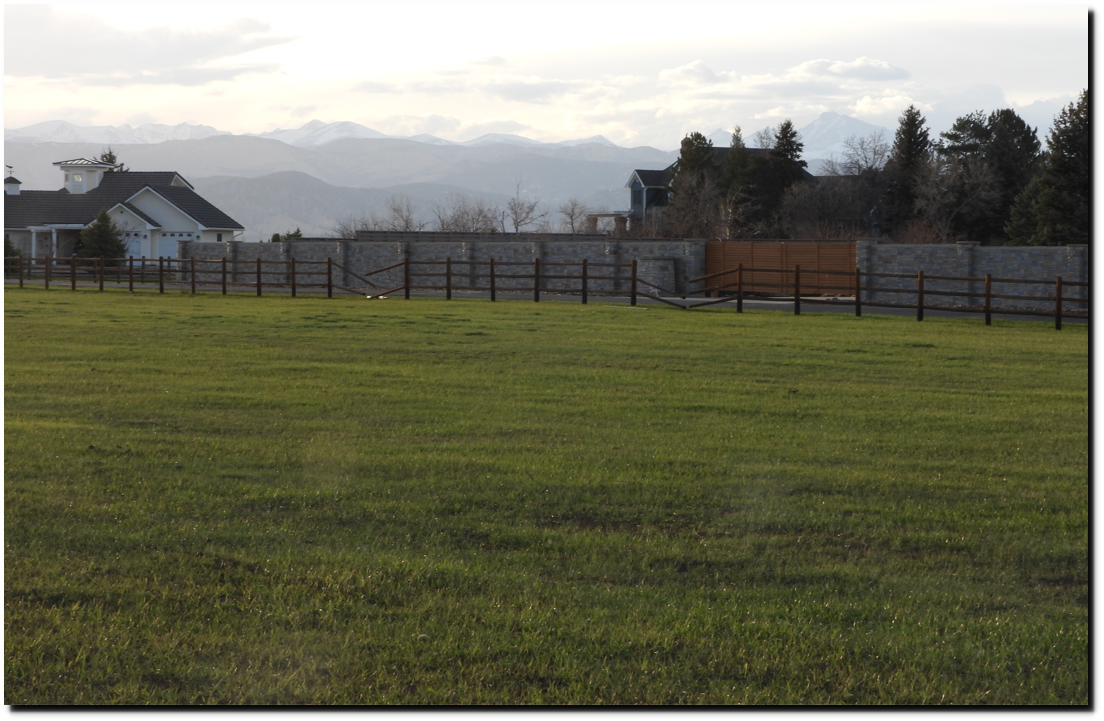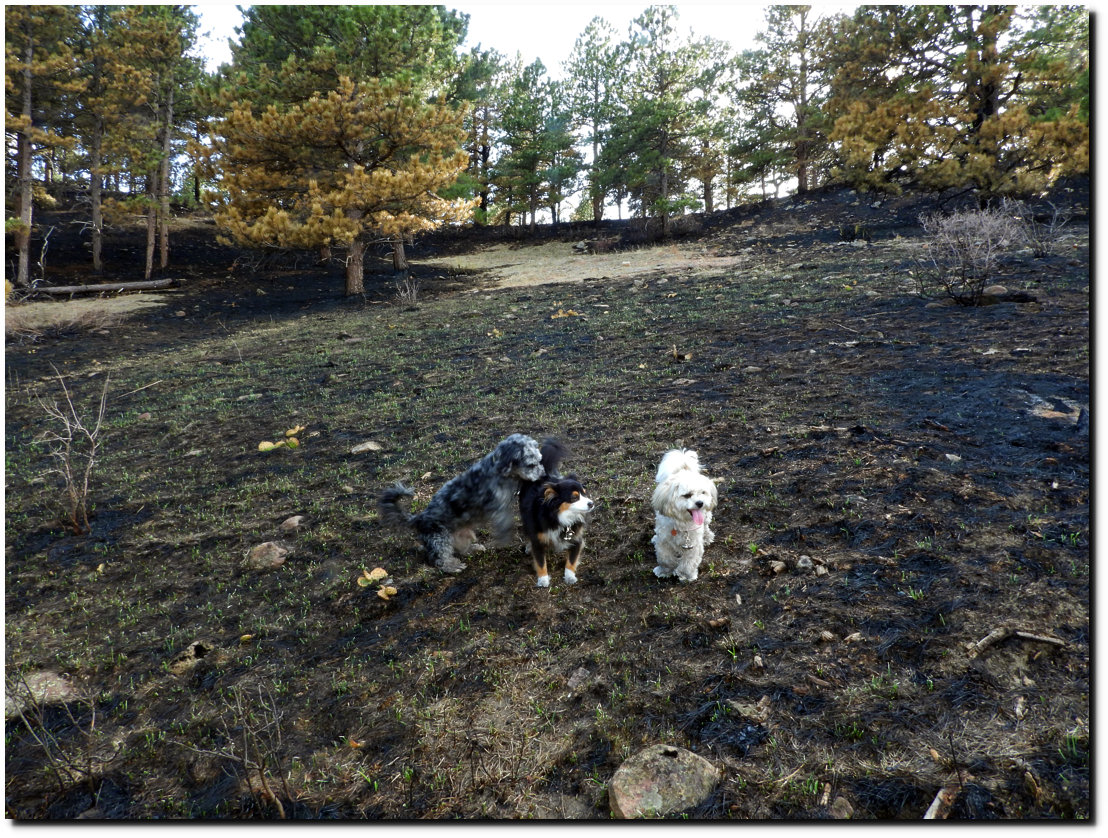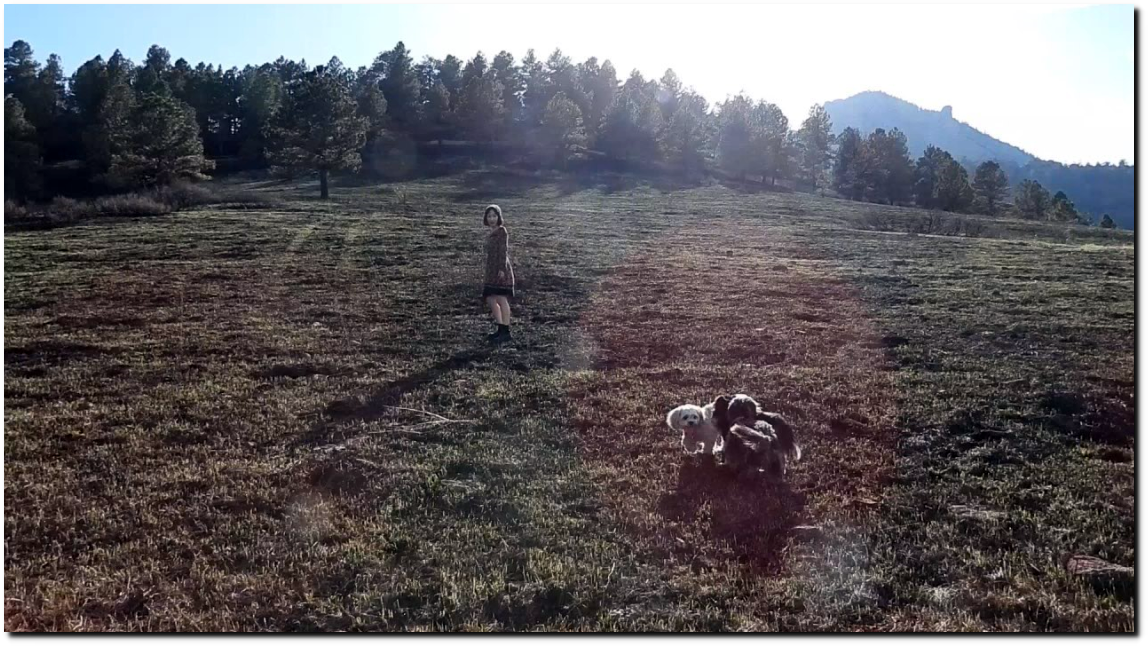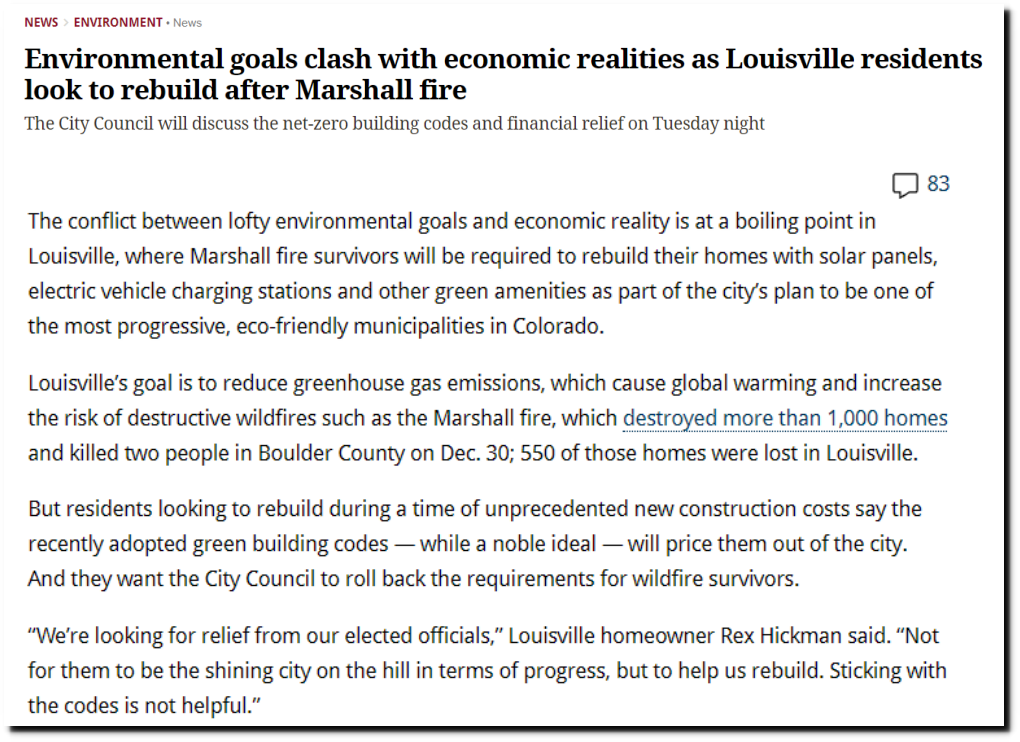We went to Louisville, Colorado yesterday and took some photos of the December 30, 2021 burn area – which occurred during 90 MPH winds. I used to work at the east end of Louisville and commuted from Boulder on my bicycle using multiple different routes, so I am familiar with almost all of the city. Most of Louisville was undamaged, but some neighborhoods were nearly completely destroyed. Only one house on Willow Place survived. These were huge multi-story wood frame houses spaced as little as ten feet apart – a bonfire waiting to happen.
Google Street View shows what 1027 and 1025 Willow Place looked like before the fire.
This is what they look like now.
View from the other side.
The only house which survived was this one on the corner. The roads created a fire break on the west and south sides.
The house at 1020 Willow Place was destroyed, but their barbecue and patio furniture (which are located on a concrete slab) survived.
Across the road to the west in the open space where the fire came from, the burn area is now full of lush green grass.
This is further west near where the fire started.
There was another fire last week in Boulder near the National Center for Atmospheric Research. The burn area already filling in with green grass.
The Louisville fire was a disaster caused by disastrously poor neighborhood design and building codes. But of course it is being blamed on “climate change.” And instead of making meaningful changes to the building codes, the city is demanding expensive net-zero new building, which they believe will prevent climate change and protect the city from future fires.
Marshall fire survivors say Louisville’s net-zero building codes will make recovery too expensive

